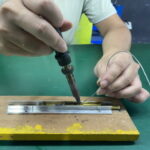
Custom Stereo Foldable Headphone
Custom Omni-directional Antennas
In today’s increasingly connected world, reliable and robust WiFi connectivity is essential for both personal and professional environments. Whether you’re setting up a home network, a corporate office, or a public hotspot, the quality and reach of your WiFi signal can significantly impact user experience. This is where a custom WiFi omni antenna comes into play.
A WiFi omni antenna is designed to provide 360-degree coverage, ensuring that the signal is evenly distributed in all directions. Unlike directional antennas, which focus the signal in a specific direction, omni antennas are ideal for environments where users are spread out over a wide area. This makes them perfect for open office spaces, outdoor areas, and other applications where comprehensive coverage is needed.











































